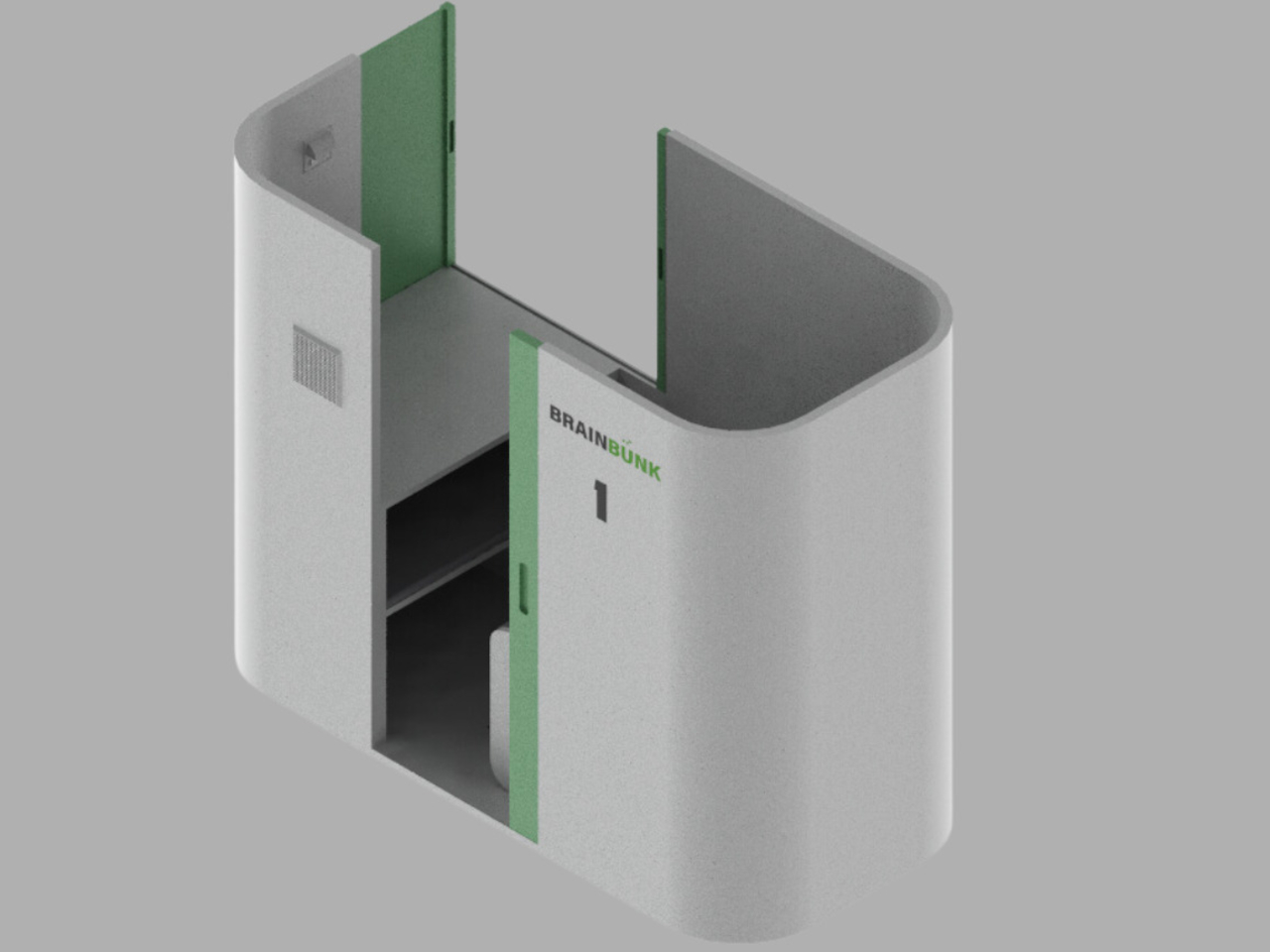
Open floor plans have become the trend after painting office cubicles in a negative light, blamed for the breakdown of human communication and social connections between colleagues. At the same time, however, these “borderless” arrangements also bring about distractions, tensions, and even stress, not to mention the complete lack of privacy when you do want it.
It doesn’t have to be an all-or-nothing solution, though, and cubicles don’t have to be the anti-social cages they’re made out to be. This personal bunker concept, for example, does put up barriers to let you focus and relax in peace, but literally leaves a window open when you do need to mingle with other people for work or study.
Designer: Ma. Camilla Isabel Reyes
Personal pod designs are becoming more common these days. People are realizing that open spaces aren’t all that they’re cut out to be and want to have some personal space from time to time. Being able to block off distractions in a visible and physical way can help improve concentration, especially when the pod includes features like soothing music and relaxing lights to help set the mood.
BrainBunk is a design concept for a personal pod intended to maximize focus and rest, while still leaving the option for communication without leaving the space. Unlike a normal desk cubicle that simply puts up walls around the table, it’s pretty much a miniature room complete with a reclining chair. The idea is to be able to work, eat, rest, or even sleep inside, all within your own personal bubble.
What makes the design a bit different from totally enclosed pods is that it has a sliding window mechanism that opens a corner of the cubicle. This would allow the person inside to communicate with others face-to-face without having to get up and walk out. And when they’re done and want to have their solitude back, they can simply slide the panel back out.
BrainBunk can have three configurations that take advantage of this unique feature. A lone cubicle would be great for the solitary worker, but groups of two or four allow that collaborative option among workers or even students. It’s a simple yet effective design for a personal space that doesn’t go over the top in terms of features and amenities, though it could probably do with a bit of improvement in the choice of more sustainable materials.